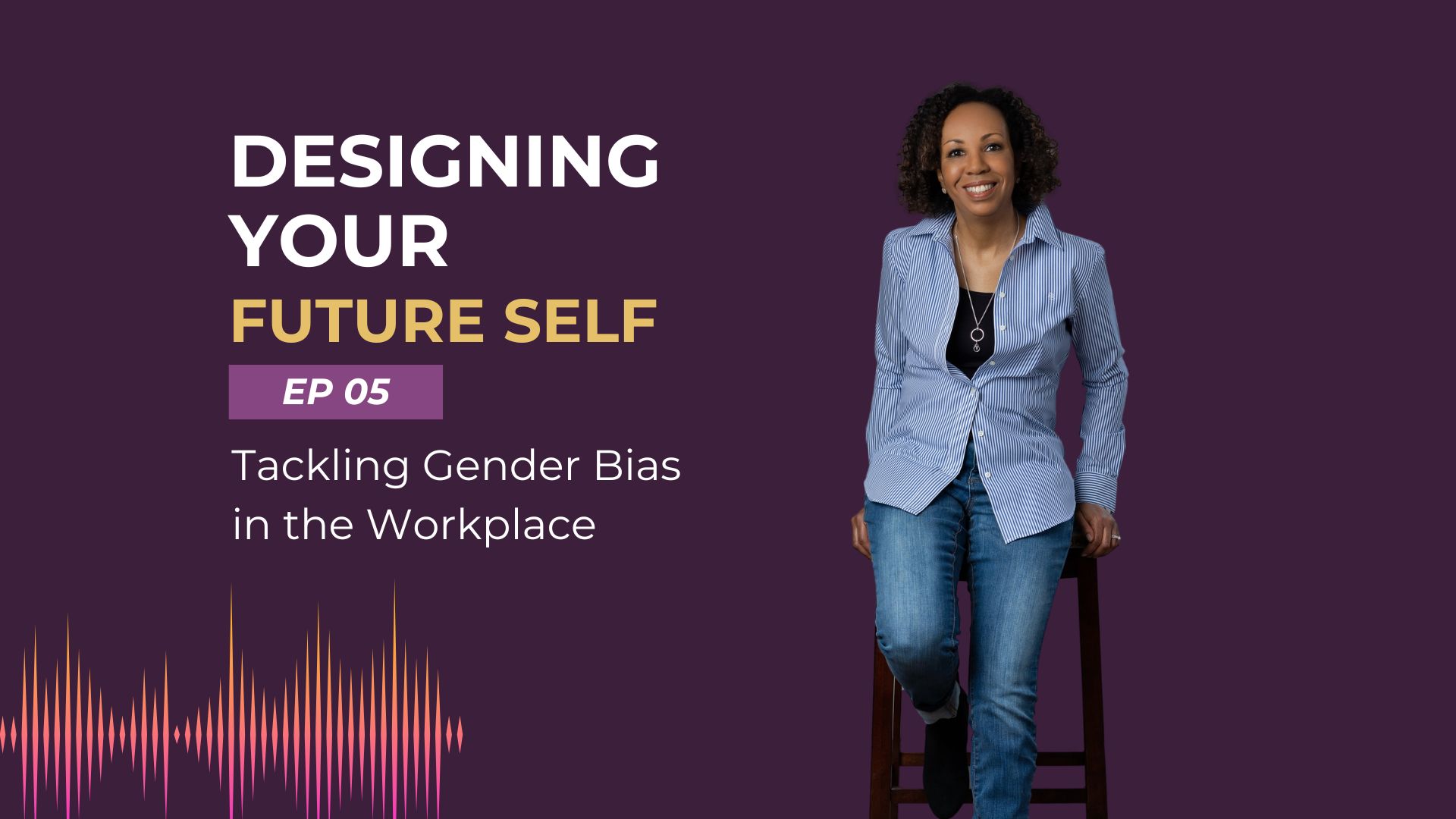Whether it’s being overlooked for a promotion, receiving less credit for your ideas, or dealing with microaggressions, gender bias impacts countless women across industries. But here’s the good news: gender bias can be confronted and dismantled.
In this episode, we’ll explore:
- How to recognize the subtle and overt forms of gender bias
- Strategies for addressing it confidently and effectively
- Ways to advocate for systemic change in your organization
What Does Gender Bias Look Like?
Gender bias shows up in both overt and subtle ways:
- Overt bias: Being told directly that leadership roles might be “too demanding” for a woman.
- Subtle bias: A man receiving praise for an idea you shared earlier or being interrupted in a meeting without acknowledgment.
These experiences can erode your confidence over time, but awareness is the first step toward change. Recognizing bias for what it is empowers you to take action.
Three Key Strategies for Tackling Gender Bias
1. Document Your Value
One of the most powerful ways to combat bias is to have evidence of your contributions.
Why it matters: When you have a clear record of your achievements, metrics, and feedback, you can confidently advocate for yourself.
How to do it:
- Keep a running list of measurable successes, such as sales numbers, completed projects, or client feedback.
- Document team contributions and collaborative wins where your role was critical.
- Save positive emails, reviews, or comments from colleagues and managers.
This isn’t about bragging, it’s about owning your value and having the tools to advocate for yourself when needed.
2. Address Bias Head-On
Confronting bias doesn’t have to mean conflict. Sometimes, the most effective response is a simple, direct comment or question that sparks awareness.
Why it matters: These small moments can shift workplace dynamics over time. They establish boundaries, reinforce your voice, and encourage others to reflect on their behavior.
How to do it:
- If interrupted during a meeting: “I’d like to finish my thought before we move on.”
- If your idea is overlooked: “I’m glad that idea resonates. I suggested it earlier, and here’s how I think we can implement it.”
3. Build Allies and Advocate for Change
Gender bias is a systemic issue, and addressing it requires collective action.
How to build allies:
- Look for colleagues who consistently amplify women’s voices or advocate for equity.
- Partner with leaders who champion diversity and inclusion.
- Form a network of women and allies within your organization to share experiences and strategies.
Advocating for Systemic Change
If your company lacks formal policies or training around bias, take the initiative:
- Suggest starting a diversity council or employee resource group.
- Organize workshops or invite guest speakers to discuss bias and inclusion.
- Advocate for leadership training that highlights the importance of equitable practices.
Why it matters: Creating a more inclusive workplace doesn’t just benefit you, it paves the way for future generations of women to thrive.
The Bigger Picture
Tackling gender bias is no small task. It takes:
- Courage to speak up, even when it’s uncomfortable.
- Persistence to push for change in systems resistant to it.
- Community to amplify voices and drive collective progress.
But the rewards are immense. By confronting bias, you’re breaking barriers not only for yourself but for others in your organization. You’re reshaping the workplace into a space where everyone has an equal chance to succeed.
Key Takeaways
- Recognize bias when it happens. Awareness is the first step toward addressing and dismantling it.
- Document your value. Keep a record of your achievements to advocate for yourself effectively.
- Address bias directly. Use assertive but constructive language to call out inequitable behavior.
- Build allies and advocate for systemic change. Leverage collective strength to create lasting organizational improvements.
Your Next Steps
- Reflect on your experiences. Identify one situation where you encountered gender bias. How did it make you feel? How did you respond?
- Start documenting your value. Create a dedicated folder or file to track your accomplishments, feedback, and contributions.
- Practice addressing bias. Prepare simple, assertive phrases to use in meetings or discussions where bias may occur.
Final Thoughts
Each of us has the power to influence change, no matter where we sit in an organization. Start by advocating for yourself and extend that advocacy to others. Together, we can dismantle gender bias and design workplaces where everyone has a seat at the table.
Subscribe & Review:
If you enjoyed this episode, don’t forget to subscribe to the podcast and leave a review. Your feedback helps us reach more listeners like you!
Next Episode Teaser:
Join us for the next episode as we explore Overcoming Impostor Syndrome. See you then!
Highlights
- [00:44] Addressing Gender Bias in the Workplace
- [01:20] Recognizing Gender Bias
- [01:52] Strategies to Combat Gender Bias
- [03:11] Building Allies and Advocating for Change
- [04:24] Conclusion and Final Thoughts
- [05:09] Closing Remarks and Call to Action
Resources and Links
- Follow me on social media for more personal growth tips @andreacmclean
- Read my blog post Fostering Psychological Safety: Nurturing Diversity in the Workplace,

Your Future, Your Design: Let’s Create It Together!
Are you ready to take the next step in designing your future? Let’s connect and explore how we can create a path that aligns with your goals, strengths, and aspirations.
Book a call with me today, and let’s start shaping the future you deserve.

















